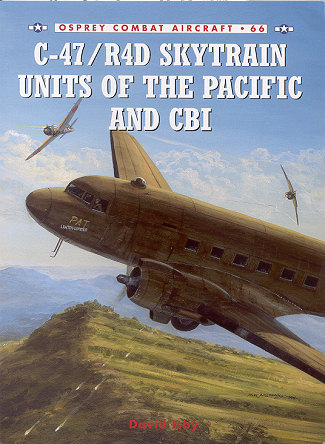 Often
overlooked by both historians and modelers, one has to consider that if it
wasn't for supply (and in this case air supply), then armies couldn't fight,
soldiers would have difficulty in many battle areas and war would be much more
difficult to fight.
Often
overlooked by both historians and modelers, one has to consider that if it
wasn't for supply (and in this case air supply), then armies couldn't fight,
soldiers would have difficulty in many battle areas and war would be much more
difficult to fight.
This was especially true in the Pacific and CBI where the
distances were long and the supply chain was rather stretched. Often ships would
be unable to affect proper supply due to enemy activity and it was up to
airborne units to fill in the gaps. This was particularly true during the early
parts of island invasion and conquest where the first things to be done were to
secure the local air field so that supply planes could bring in needed equipment
and take out wounded. These same aircraft were used to drop paratroops behind
lines to help advancing armies.
For the US and many of her allies, this meant relying on one
aircraft and that was the C-47. Along with the Jeep and LST, the 'Gooney Bird'
was one of the five military weapons that Eisenhower listed as having helped to
win the war. And he was right. When you think about it. One of biggest drawbacks
that the enemy had was a lack of proper air transport. Even then, the Japanese
used license built C-47s for most of their air transport work.
David Isby has done a superlative job of piecing together
what really is quite a complex history of those units that operated in the
Pacific. From the very beginning until the end of the war in the Pacific, the
C-47 was used in every major operation and on every front. Though augmented by
the C-46 (as much due to its longer range as anything), it was the C-47 that one
saw everywhere. And really, there were not enough of them.
One may think that flying transports would be dull and boring
work. For many it was. It was also one of the few places that you would see a
lot of enlisted pilots. It was determined that officers would be the ones to fly
the tactical aircraft, while enlisted men were really only allowed to fly
transports and liaison aircraft. Yet flying a C-47 over the Himalayas into China
was by no means a piece of cake. Heavy weather, heavy aircraft and the extreme
altitudes these planes would have to fly made every trip fraught with danger.
Then there were the Japanese aircraft. Since fighter escort was not always
possible (and this was particularly true early in the war), there was always the
chance that the enemy would find these planes. If this happened, then the pilot
had to use all his skill to keep from being shot down. Miraculously, one C-47
crew was credited with an aerial victory when they maneuvered a pursuing Oscar
into a hill. This is event is shown on the cover.
This unique title is also ably illustrated by Chris Davey,
who provides 11 pages of superb color profiles. There is material there that
will stir the building juices of any eager modeler. When you combine the superb
prose, outstanding profiles and some of the best period photos around, this
makes a book that you simply must have.
February 2007
For more on the complete line of Osprey books,
visit www.ospreypublishing.com. In the US, it is
Osprey Direct at 44-02 23rd St, Suite 219, Long Island City, NY 11101., where you can
get a catalogue of available books.
If you would like your product reviewed fairly and quickly by a
site that has nearly 350,000 visitors a month, please contact
me or see other details in the Note to
Contributors.
 Often
overlooked by both historians and modelers, one has to consider that if it
wasn't for supply (and in this case air supply), then armies couldn't fight,
soldiers would have difficulty in many battle areas and war would be much more
difficult to fight.
Often
overlooked by both historians and modelers, one has to consider that if it
wasn't for supply (and in this case air supply), then armies couldn't fight,
soldiers would have difficulty in many battle areas and war would be much more
difficult to fight.